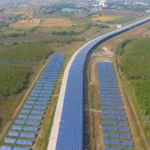Introduction
Climate change is one of the most pressing global challenges of our time, and its effects are increasingly visible across sectors, including tourism. As a sector dependent on natural resources and stable environmental conditions, tourism is highly vulnerable to climate-related impacts. At the same time, tourism also contributes to climate change, accounting for 8% of global greenhouse gas emissions due to transportation, accommodation, and activities.
For sustainable tourism, which aims to minimize environmental damage while maximizing social and economic benefits, climate change presents a dual challenge: adapting to its impacts and reducing its contribution to the problem. In this article, we explore how climate change is reshaping sustainable tourism and the strategies being adopted to mitigate its effects.
Rising Temperatures and Their Impact on Tourist Destinations
The rise in global temperatures due to climate change has altered the appeal of many tourist destinations. For instance:
- Alpine tourism: Ski resorts in Europe and North America are experiencing shorter winter seasons due to declining snowfall, threatening the $70 billion global ski industry.
- Beach tourism: Rising sea levels and coastal erosion are impacting popular beach destinations like the Maldives, which risks losing up to 80% of its land area by 2100 if sea levels rise by just one meter.
- Wildlife tourism: Higher temperatures are disrupting ecosystems and migratory patterns, affecting popular wildlife attractions like safaris and birdwatching. For example, coral reefs that support marine tourism are at risk, with 14% of the world’s coral reefs lost between 2009 and 2018 due to bleaching caused by warming oceans.
Extreme Weather Events and Tourism Disruption
The frequency of extreme weather events such as hurricanes, wildfires, and floods has significantly increased due to climate change. These events disrupt tourism in several ways:
- Infrastructure damage: Hurricanes and typhoons have caused extensive damage to tourism infrastructure in the Caribbean and Southeast Asia, leading to millions in repair costs and loss of tourist revenue.
- Safety concerns: Tourists are deterred from visiting regions frequently impacted by wildfires (e.g., California and Australia) or floods (e.g., Venice, Italy).
- Seasonal unpredictability: Changing weather patterns make it difficult to predict peak seasons, affecting travel planning and revenue streams.
Climate Change and Travel Costs
Sustainable tourism often promotes low-impact travel options such as railways or electric vehicles. However, the rising costs of sustainable travel options can deter tourists.
- Airline emissions: Aviation contributes to 2.4% of global CO2 emissions. As governments implement carbon taxes and airlines offset emissions, ticket prices are likely to increase, impacting accessibility.
- Eco-friendly accommodations: Although sustainable hotels are growing in popularity, they often come at a higher cost, which may deter budget-conscious travelers.
Water Scarcity and Tourism
Tourism is a water-intensive sector, with activities like swimming pools, golf courses, and luxury accommodations consuming large amounts of water. However, climate change-induced water scarcity is creating challenges for destinations such as:
- Spain: Popular tourist destinations like Barcelona are facing seasonal water shortages, impacting local communities and tourism businesses.
- South Africa: Cape Town’s “Day Zero” water crisis in 2018 forced the tourism sector to adopt strict water conservation measures.
The Role of Technology in Addressing Climate Challenges
Despite these challenges, technology is playing a vital role in mitigating the impact of climate change on sustainable tourism.
- Smart tourism solutions: Real-time data on weather conditions, overcrowding, and energy consumption help destinations manage resources efficiently.
- Renewable energy adoption: Many hotels and resorts are transitioning to solar or wind energy, reducing their carbon footprint.
- Carbon offset programs: Travelers can now calculate and offset their carbon emissions through apps and platforms that support reforestation and clean energy projects.
Strategies for Mitigating Climate Change in Tourism
Sustainable tourism can only thrive by adopting proactive measures to mitigate climate risks:
- Promoting eco-tourism: Encouraging travelers to visit lesser-known destinations helps reduce the pressure on popular hotspots while promoting equitable tourism.
- Investing in green infrastructure: Resorts and hotels are increasingly adopting energy-efficient designs, rainwater harvesting, and waste management systems.
- Policy interventions: Governments can impose stricter regulations on emissions, provide incentives for sustainable practices, and invest in renewable energy projects.
- Community involvement: Engaging local communities in tourism ensures the preservation of natural resources while providing economic benefits.
The Road Ahead for Sustainable Tourism
While the challenges posed by climate change are daunting, they also offer an opportunity for the tourism sector to lead the transition toward sustainability. According to the World Travel and Tourism Council (WTTC), the global tourism industry could cut its emissions by 50% by 2030 by adopting greener practices and technologies.
Additionally, raising awareness among travelers about the environmental impact of their choices is crucial. Travelers must be encouraged to:
- Opt for low-carbon transport options like trains.
- Choose eco-friendly accommodations.
- Support local economies and sustainable tourism initiatives.
Conclusion
Climate change is undoubtedly reshaping the future of tourism, particularly sustainable tourism. Rising temperatures, extreme weather events, and resource scarcity present significant challenges to the sector, but they also highlight the urgent need for innovative solutions and collaborative efforts.
By embracing sustainable practices, leveraging technology, and fostering community participation, the tourism industry can not only adapt to the changing climate but also become a driving force for global environmental conservation. Sustainable tourism is not just a choice; it’s a necessity for a greener, more resilient future.












